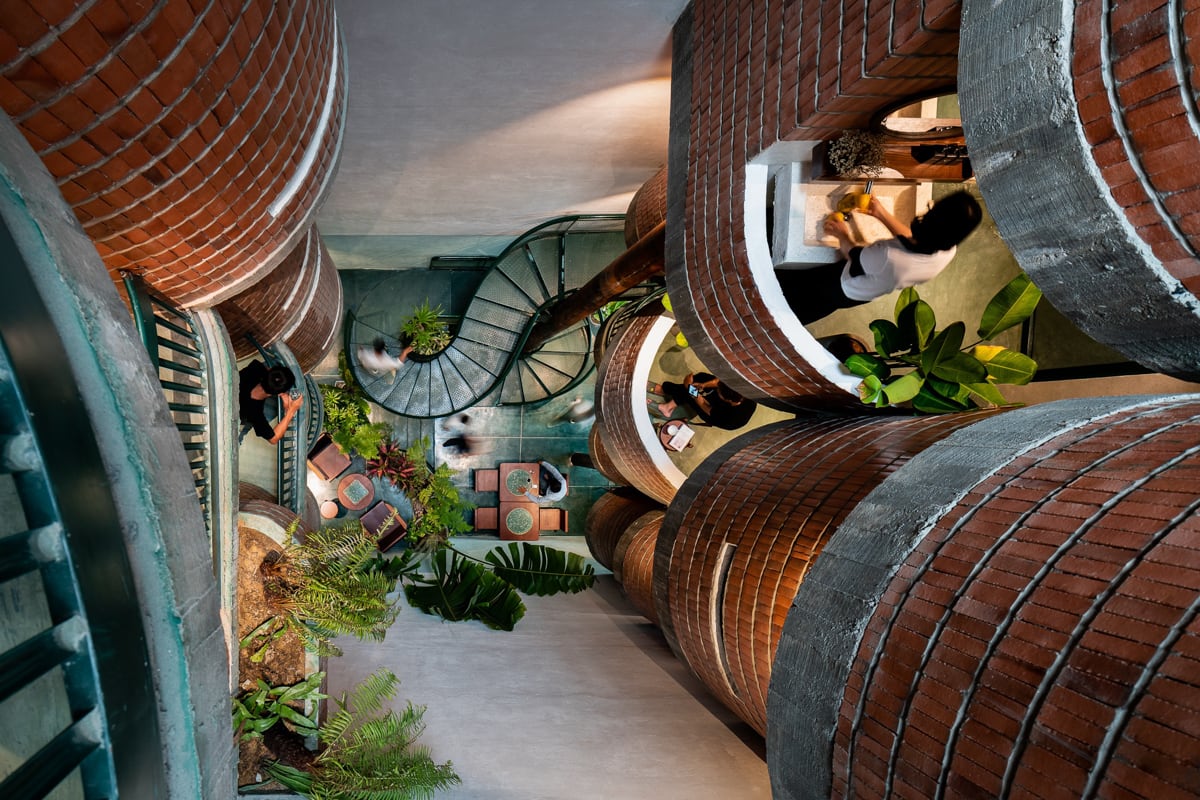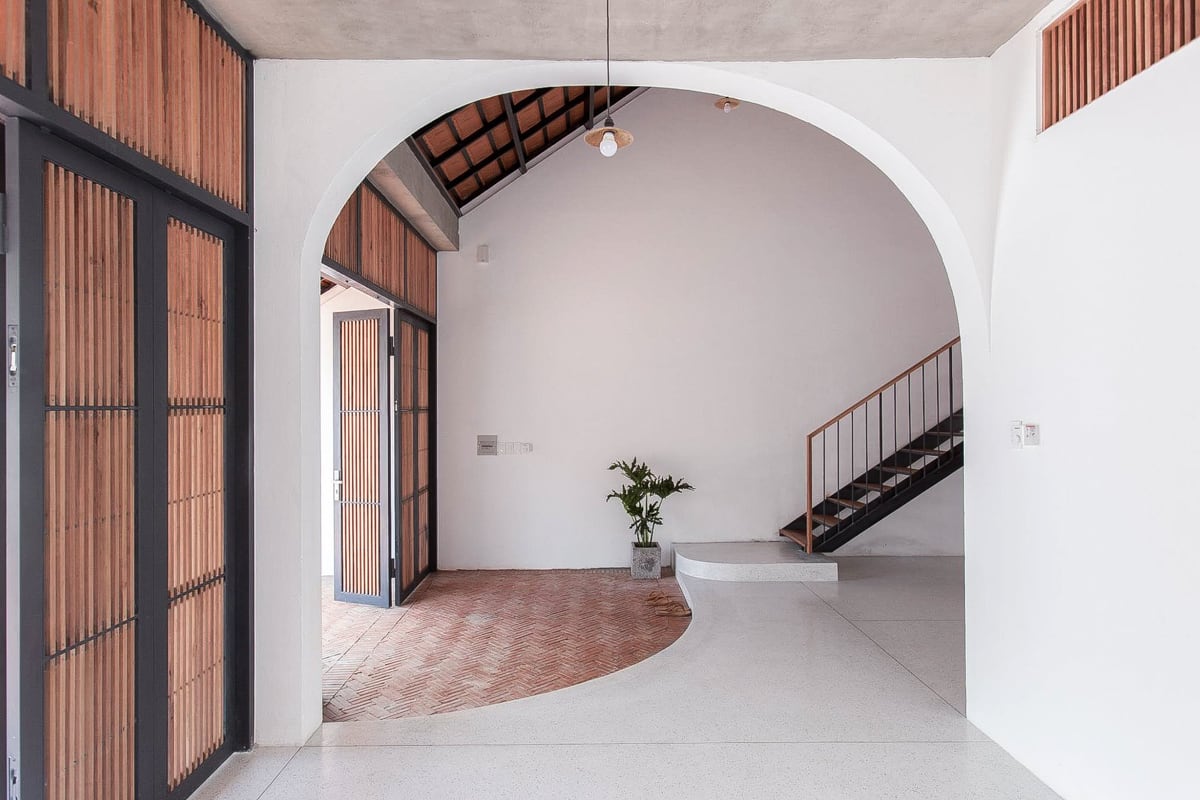Green architecture is an approach that favors pro-environment, eco-friendly and sustainable buildings. Seeking to minimize the negative impact of construction projects on human health and the ecosystem at large, sustainable architects attempt to choose non-synthetic materials and renewable energy sources. Think solar power and wind power, energy-saving appliances and locally-obtained materials to eliminate long-haul transportation.
During the years of breakneck development in Vietnam’s sprawling metropolises, preserving the cities’ “green lungs” was seen as secondary. The needs of urbanization came first. Today, acknowledging the dearth of green spaces in the cities, the new architectural landscape aims to reconcile the two.
Vietnam’s emerging architects have a clear objective–to improve the living conditions while practicing moderation in the use of materials. Below is a round-up of Vietnamese emerging architecture practices promoting the eco-friendly agenda and sustainable development.
T3 Architects | Family Garden
Established by Charles Gallavardin and his wife, T3 Architects is a Vietnam-based international firm specializing in green-pronged and bioclimatic architecture. The firm optimizes the value of properties through sustainability.
Gallavardin founded T3 with hopes to create spaces where people can live in harmony with the environment and nature. At that time, demand for green buildings was weak but interest was growing.
Nestled in Thao Dien, Family Garden is a spacious complex comprised of design studios, practices and open-air venues. T3 chose Family Garden as its Saigon office location, sharing the greenery, common spaces and other facilities with the creative community.

Every corner of Family Garden is made using traditional techniques combined with sustainable and low-carbon footprint materials, where possible. Carefully treated, well-dried wood is imported from New Zealand — at once a cheaper and more abundant source of supply.
Reflecting T3’s design philosophy — to use local and environmentally-friendly materials as much as possible, Family Garden welcomes you with shady trees lining the entrance alley.

T3’s office is separated from other studios by wood panels. Huge glass panels are set in the front and at the back of the office. These panels serve as windows overlooking the pond in the center of the complex as well as lush greenery.
For roofing, ventilation bricks, cement tiles and water palm leaves are made use of, filtering sun radiation and cooling down the area.
Atelier tho.A | The Memory
Atelier tho.A’s The Memory is a green, small-scale tourist hotel located in Da Nang city. Not only is it visually stunning, but it also shows impressive efforts in organizing space. Especially when compared with conventional tourist hotels of the same area and scale.

Working off a challenging brief from the client who asked for an interesting “touristy site,” Atelier tho.A has turned the prejudice — that a hotel is a vague, monotonic place — on its head. The result is a nostalgic design that springs from the concept of an “open-hearted” space.

The architects took a different approach to the distribution of floor plans, attempting to achieve a diversity in spatial organization.
Rooms are no longer in a common function chain but are multi-functional. The diverse-in-form approach sees the central atrium split the building into hotel rooms and dorm rooms, with two separate staircases.
The appearance of the atrium makes The Memory fully a hotel based on an “open-hearted” sense of serving. This openness is foretold by a large, glassed-in void and a creased perforated iron cage on the solid façade, inlaid with russet tiles.
Hung Nguyen Architects | Pavilion of the Origins
Hung Nguyen, founder of Hung Nguyen Architects, is a rising star among emerging architects in Vietnam who are contributing to the “green movement”. Having participated in multiple training courses and programs, Hung Nguyen has been nominated for both national and international awards. Among them are the Tree-planning Competition, Rome Motorino Checkpoint and Hanoi Architectural University’s competitions.
Hung Nguyen was born and raised in Hanoi — a city choked with smog due to high traffic volumes and industrial activities. This experience informed his ethos which aims to detoxify the polluted air. He and his team built the Pavilion of the Origins to fulfill this goal.

The three-storey pavilion features plenty of lattice-beds with light-colored pebble floors. There is also a variety of leafy plants and white cuboid frames built of upcycled steel. In addition to decorative qualities, the pavilion’s living plants, namely ferns, snake plants, peace lily and palms, are hovering around to absorb harmful toxins.

A translucent polycarbonate roof allows natural light to pour in while reducing solar radiation. To create fluid interconnected spaces, Hung Nguyen purposely arranges different modules at variable heights. He also aims to create a harmonious relationship between humans, nature and spaces.
K59 Atelier | Tile Roof House
Reflecting a modern twist on cultural identities, Tile Roof House modelled by K59 Atelier is a contemporary interpretation of vernacular architecture. As Saigon has a tropical monsoon climate, K59 uses elements from traditional dwellings to make the structure withstand Vietnam’s seasons of rain and sunshine.
Like traditional Vietnamese houses, Tile Roof House has a tall, open structure designed to create cool, airy interiors. The terracotta-tile roof is elevated slightly towards the east side street, and is punctured by two balconies. It brings in natural light and facilitates cross ventilation to cool down the house.

The interior of the house is divided into two blocks positioned along the sun path, which are described as an open “action area” and enclosed “stillness area”. The shared living spaces flow effortlessly from one room to the next to support relationships between family members. The design also creates a visual connection with the trees in the front and back yards.

During the monsoon season, rainwater cascades down the steep gradient and is then collected in a tucked away water tank. Overflowing water would form a natural waterfall for kids to enjoy at the entrance of the house, and is also used to irrigate the gardens in the summer.
KIENTRUC O | House D
Established in 2013 by Dam Vu, KIENTRUC O is a young architecture and interior design firm based in Saigon. Run by dynamic architects and industrial designers, KIENTRUC O’s mission is to create a uniquely Vietnamese brand of architecture. The firm tries to balance the urban and the natural, while meeting people’s needs.
KIENTRUC O has renovated House D, a 70-year-old two-storey colonial villa sitting on one of the busiest city roads in Saigon. House D was originally a brick building that was expanded at the back with a steel structure twenty years ago.

Placed in the base of the lightwell, a pool surrounded with stones is wrapped by a perforated wall of stacked tiles. The roof above the yard is made of gridded white metal, allowing daylight to shine through. On the other hand, circular openings provide gaps for trees to grow through. Up on the curved balconies of the other building, more greenery is planted along the edge of a paved walkway.

Feature image from KIEN TRUC O Fanpage.
Related Content:
[Article] Vietnamese Architecture Company HTAP’s Design Thinking
[Article] A Complete Guide To Your Indochine-Style Dream Home
